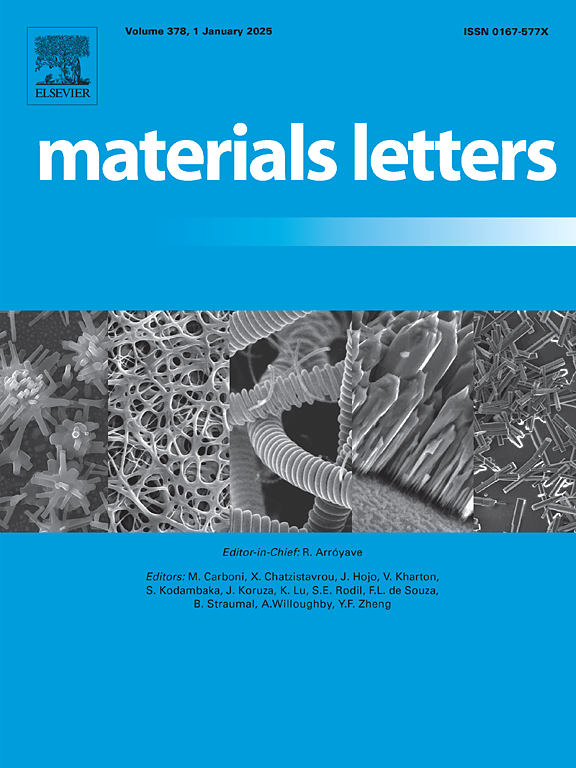Co-TiO2作为碱性水裂解制氢的紫外可见光催化剂
IF 2.7
4区 材料科学
Q3 MATERIALS SCIENCE, MULTIDISCIPLINARY
引用次数: 0
摘要
在本研究中,TiO2纳米管(TNT)通过阳极氧化生长在钛箔上,然后使用简单而经济的电沉积方法对钴进行修饰。光电化学分析表明,在电流密度为10 mA/cm2时,Co-TNT生成氢所需的过电位在黑暗中为380 mV,在紫外光下降至358 mV。计时安培测量表明,Co-TNT产生的光电流为0.69 mA/cm2。此外,80mw /cm2的绿光导致0.2 mA/cm2的电流密度,对应于0.58%的入射光子电流效率(IPCE)。这些发现表明,Co-TNT作为一种紫外-可见光催化剂,具有在碱性介质中通过水裂解制氢的巨大潜力。本文章由计算机程序翻译,如有差异,请以英文原文为准。

Co-TiO2 as a UV-visible photocatalyst for hydrogen generation by alkaline water splitting
In this study TiO2 nanotubes (TNT) were grown on titanium foil through anodization and subsequently modified with cobalt using the simple and cost-effective electrodeposition method. Photoelectrochemical analysis of the electrode so developed revealed that the overpotential for hydrogen generation required for Co-TNT at a current density of 10 mA/cm2 was 380 mV in the dark and decreased to 358 mV under UV light. Chronoamperometric measurements showed that Co-TNT generated a photocurrent of 0.69 mA/cm2. Additionally, green light at 80 mW/cm2 resulted in a current density of 0.2 mA/cm2 corresponding to an incident photon-to-current efficiency (IPCE) of 0.58 %. These findings suggest that Co-TNT has significant potential as a UV–visible photocatalyst for hydrogen generation via water splitting in an alkaline medium.
求助全文
通过发布文献求助,成功后即可免费获取论文全文。
去求助
来源期刊

Materials Letters
工程技术-材料科学:综合
CiteScore
5.60
自引率
3.30%
发文量
1948
审稿时长
50 days
期刊介绍:
Materials Letters has an open access mirror journal Materials Letters: X, sharing the same aims and scope, editorial team, submission system and rigorous peer review.
Materials Letters is dedicated to publishing novel, cutting edge reports of broad interest to the materials community. The journal provides a forum for materials scientists and engineers, physicists, and chemists to rapidly communicate on the most important topics in the field of materials.
Contributions include, but are not limited to, a variety of topics such as:
• Materials - Metals and alloys, amorphous solids, ceramics, composites, polymers, semiconductors
• Applications - Structural, opto-electronic, magnetic, medical, MEMS, sensors, smart
• Characterization - Analytical, microscopy, scanning probes, nanoscopic, optical, electrical, magnetic, acoustic, spectroscopic, diffraction
• Novel Materials - Micro and nanostructures (nanowires, nanotubes, nanoparticles), nanocomposites, thin films, superlattices, quantum dots.
• Processing - Crystal growth, thin film processing, sol-gel processing, mechanical processing, assembly, nanocrystalline processing.
• Properties - Mechanical, magnetic, optical, electrical, ferroelectric, thermal, interfacial, transport, thermodynamic
• Synthesis - Quenching, solid state, solidification, solution synthesis, vapor deposition, high pressure, explosive
 求助内容:
求助内容: 应助结果提醒方式:
应助结果提醒方式:


